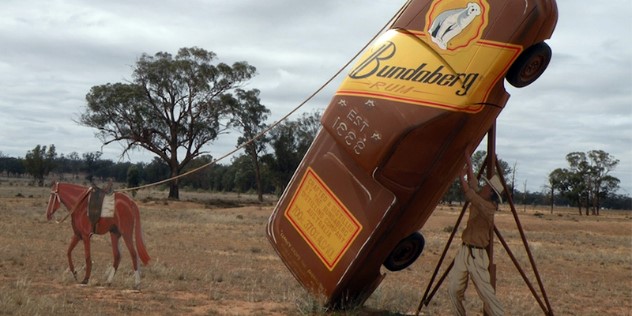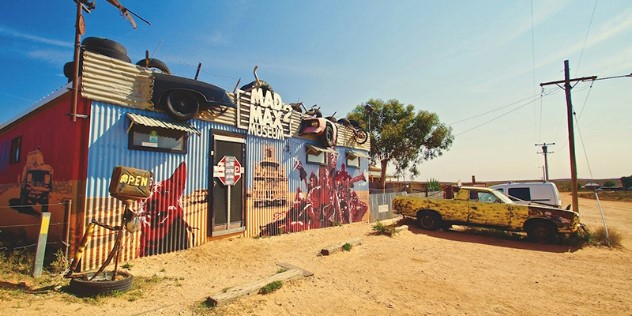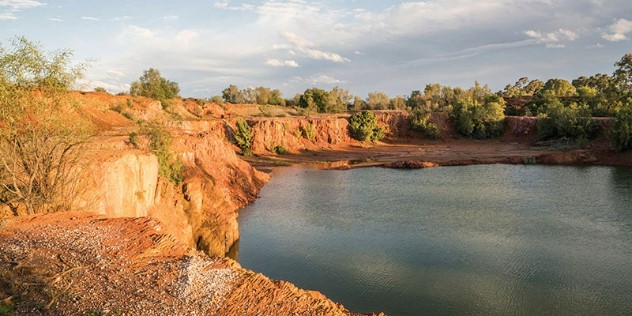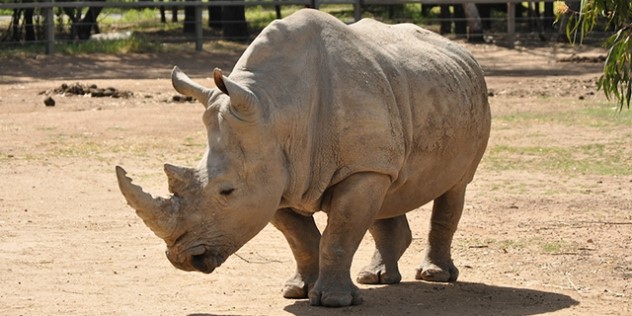Must visit towns in outback NSW

Some people choose to tour outback NSW between March and October to avoid the heat. This is like travelling to Thredbo in summer to avoid the snow. Baking sun, azure skies, empty roads, chalk-dry dirt and a crow’s lonely call form the romantic picture city dwellers have of the outback – and in summer that’s exactly what you’ll get.
Here are some of the best destinations in outback NSW.
Condobolin
Probably best known in pop culture as the birthplace of Shannon Noll, Condobolin plays host to the famous ‘Utes in the Paddock’ exhibition. Old Aussie utes – long past their roadworthiness – have been given a second life as murals thanks to Australian artists. The tiny village of Ootha, just off the highway east of Condobolin, featured Utes in the Paddock when it first opened in 2010. Bu in May 2018, the Lachlan Shire Council officially announced the outdoor gallery would be moved to a 25-acre block on The Gipps Way, south of the Condobolin town centre.

Broken Hill
There’s an awful lot of not much beyond Broken Hill, but within the historic mining town there’s no shortage of things to see and do. Pay a visit to Bells Milk Bar, which harks back to a time of lino floors, aluminium chairs and malted milkshakes. It was already well established as ‘Pearly Bells’, an old soda fountain shop, before an overhaul and name change back in 1938. Just outside town, in that great tradition of cheesy tourist attractions, is the Big Bench, while the Mad Max Museum is in nearby Silverton and dedicated to Mad Max 2 (1982), sequel to the 1979 cult Aussie film.

Read more: Round trip to Broken Hill
Cameron Corner
Much of the 469km drive between Broken Hill and Cameron Corner is still drought affected. There are only three notable towns along the route – Packsaddle, Milparinka and Tibooburra – and they all have a pub, except Tibooburra which has two. Make the trek to the point where the states of NSW, Queensland and South Australia converge. A simple pillar marks the site, which was named after NSW surveyor John Cameron. The Dingo Fence, built during the 1880s, also passes through here along the NSW border.

Dubbo
Think ‘Dubbo’ and it’s the Taronga Western Plains Zoo that first comes to mind, having become a Central NSW icon since it opened in 1977. These days, Dubbo boasts an elephant-sized list of other attractions and activities. There’s the Western Plains Cultural Centre (where you can learn about local indigenous history), Old Dubbo Gaol dating back to 1847, the botanic gardens, a cycleway, and even kayaking on the Macquarie River. Like many country towns, Dubbo has become a hub for fine dining made from regional produce. Wineries and farmers; markets abound and there are dozens of restaurants and cafés.
Tamworth
Tamworth in northern New South Wales has the feel of a country town, yet it’s big enough to have all the offerings of a cosmopolitan city. Nationally renowned for its annual music festival, Tamworth is mecca for Australian country music enthusiasts. Embodying this spirit is the Big Golden Guitar, which stands outside the tourist information centre and has become a selfie spot for musicians and fans alike. Standing 12 metres high, it was officially opened on January 25, 1988, by the late Slim Dusty. The next Tamworth Music Festival is scheduled for January 14-23, 2022.
Cobar
Heading west along the Barrier Highway for Cobar you will find a town rich in mining heritage and natural attractions. See restored mining equipment at the Cobar Miner’s Heritage Park, visit the now defunct Great Cobar Copper Mine from the 1830s, and for Instagram-worthy views of an open-cut mine, head to the viewing platform at Fort Bourke Hill Lookout. Follow the self-guided Cobar Heritage Walk to browse the town’s historic buildings, including those from the Victorian and Edwardian era, before heading to the Great Western Hotel and ordering a chicken parmy.

Five ways to invest in our regional towns
Domestic tourism will help our small towns. It’s important to do more than just roll in and take a few photos. Most towns have a tourist information centre or signage outlining special areas of interest, but sometimes it’s the simple things that make a difference.
Here are five easy ways your tourist dollar can help our regional towns:
1. Eat at the local pub or club
2. Buy your fuel from a rural petrol station
3. Stay in local motels, caravan parks or farm stay accommodation
4. Take a tour with local guides
5. Buy local produce
And don’t forget to tell everyone about your trip using #WhyWeRoadTrip to encourage further tourism!
Article adapted. Originally published in the Open Road Magazine.







